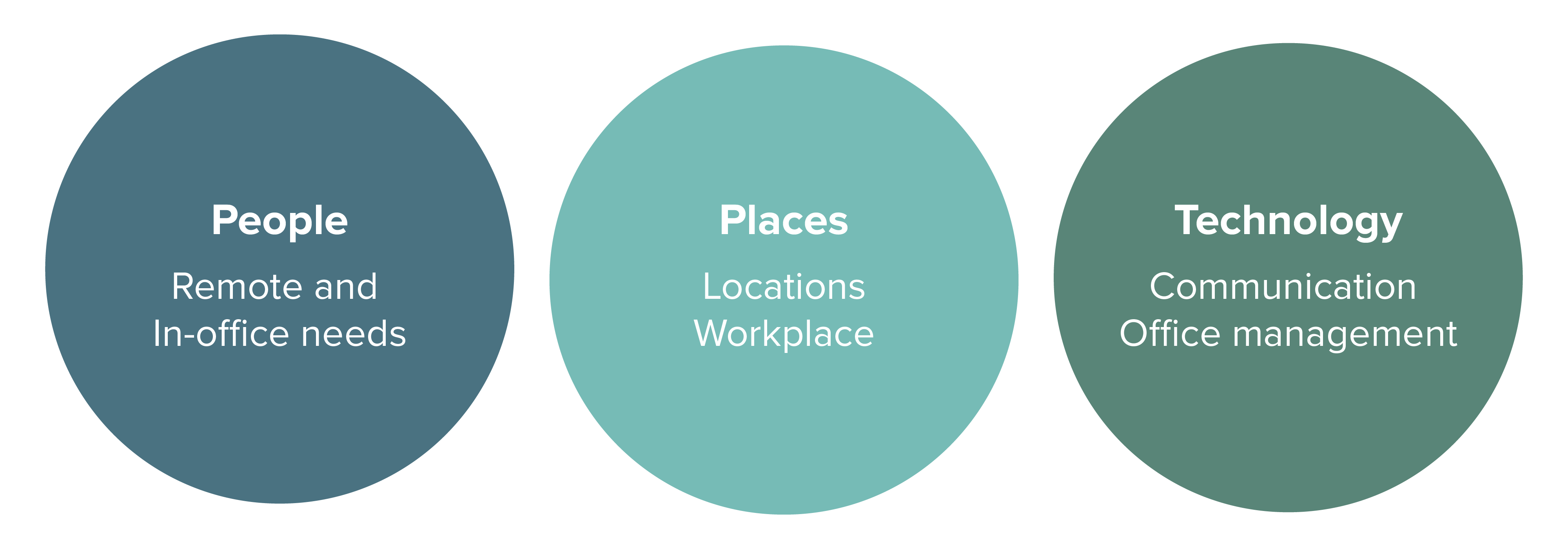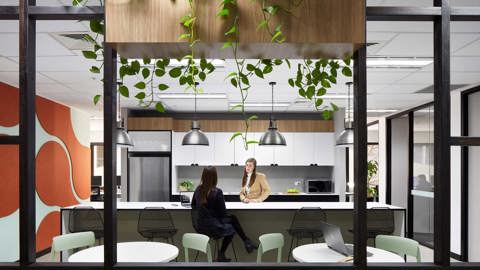What is the hybrid workplace model?
A hybrid workplace model is one where employees have the option of working in an office, working remotely from an alternative location (usually at home), or most commonly, a combination of both.
The goal of a hybrid workplace is to balance the individual work needs of staff with their ability to collaborate and be productive, both in a remote location and in shared office space.
Why is it important to adapt your business to the hybrid workplace model?
Two years on into a global pandemic this may seem like a redundant question, right?
What we’re talking about here is not the knee-jerk ‘working from home’ reaction that was forced on all businesses on the advent of COVID-19, but a well-planned and thought out adaptation of a new way of working that will meet current and future workplace and staff requirements.
Ultimately, the answer to the question, “why is it important?” lies with your key business asset – your staff – present and future.
Recent statistics show:*
- 83% of employees would love for this model to be the new normal
- 54% of employees say they’d leave their current job for one that provides more flexibility, especially in the area of remote work
To stay relevant to present staff and attractive to new talent, it will be important for your business to meet the employee expectation of flexible work patterns, which in turn requires a successful hybrid workplace model.
* 30 Essential Hybrid Work Statistics [2022]: The Future of Work – Chris Kolmar
What is the key to successful adaptation of a hybrid workplace model?
The answer, in short, is workplace strategy.
We discuss the background of Workplace Strategy in our blog, Workplace Strategy, but basically it is the process by which you align your physical workspaces to your work patterns.
Having a professional workplace strategist, like Crest on your team makes a huge difference to the strategy process and the hybrid workplace model outcome.
What are the key workplace strategy processes to achieve a successful hybrid workplace model?
The key processes focus on people, places and technology.

The five key workplace strategy processes
Through Executive Interviews, Staff Questionnaires and Departmental Workshops, the Workplace Strategy processes will provide a concrete understanding of the roles of your staff, how they work, where they need to work and what they need to perform at their best.
It will identify what type of work that can be done remotely and what type of work will be done in the office in the hybrid workplace model.
Basically, these processes will provide the blueprint for your hybrid workplace model…which could see your office serving a whole new purpose by embracing a hybrid model.
Utilisation studies are a unique feature of Workplace Strategy that gives you a greater understanding of how your office is currently being utilised. In a hybrid workplace model you will likely find that the utilisation of existing spaces is reduced or altered.
For example, the utilisation work we did with Breville discovered only a 32% average utilisation of existing individual desk spaces over a typical 2 week period.
In another example, the interviews and workshops we conducted with Universities Admissions Centre (UAC) found that large capacity meeting rooms were occupying valuable space, when in fact more than half of the meetings conducted contained only 2-3 people. Furthermore, the audio-visual capabilities in the existing meeting rooms were found to be insufficient to support their ways of working.
Once the role of the office and use of space has been redefined, you may find that your current office structure is no longer appropriate to support a hybrid workplace model.
The remedy to this can range from a reshuffle of existing spaces/furniture, to a full office redesign.
Some examples of common changes are:
- Moving from fixed individual desk settings to a more agile / hot desk layout e.g. where focus work is now of lessor importance in office.
- Moving from large enclosed meeting rooms to more open collaboration spaces for group project work and smaller quiet rooms.
Furniture plays a key role too:
- Sit-stand individual and collaboration desks provide ergonomic usability for all staff.
- Flexible, modular soft furnishings and stackable items that can be stored when not in use provide flexibility of configuration to meet different needs.
- Operable walls quickly create varying room shapes / uses and create multi-purpose spaces
Workspaces fit for purpose in a hybrid workplace model will promote dynamic collaboration, i.e. where workspaces can be readily changed to meet the needs of people, rather than people having to conform to, or be limited by their work environment.
There is a plethora of hardware and software solutions for seamless, remote communications and office management, but they need to be planned and structured correctly.
- For collaboration and meeting areas, lighting, camera and audio equipment are key. Mobile meeting tools like whiteboards and electrical equipment allow quick and ready assembly in different locations to provide dynamic collaboration.
- Booking systems help manage office attendance and meeting room bookings.
- Suitability of wifi and technology set up for remote workers must be considered too, including ease of access to peripheral devices like printers / scanners.
- Technology needs to be consistently seamless between in-office and remote workers e.g. cameras that can zoom in on speakers so everyone has an equal voice, or focus in on data/presentations so all have equal access to information.
Physical wellbeing
In-office – solutions include sanitisation / cleaning / touchless surfaces / air purifiers / CO2 monitors, sit-stand desks promote/allow movement, touch-free concierge sign-in
Remote – ensure home set up is suitable / ergonomic
Mental wellbeing / Company Culture
This needs to be actively supported and fostered in a hybrid workplace through strategies like regular feedback, performance recognition, intentional personal communication (particularly with remote staff), company wide updates and communications.
For further discussions on Wellbeing and Office Culture please see our blogs Office Culture in a Remote Workforce and Employee Engagement in a Remote Work World.
What are your next steps to achieving the best hybrid workplace model for your business?
Workplace strategy is fundamental to any great workplace design and ensure you achieve a hybrid workplace model that fits your business.
“…a well-executed hybrid workplace can be a magnet that brings people together and helps us work better than ever before.” ^
^ 4 Strategies for Building a Hybrid Workplace that Works – Jim Keane & Todd Heiser
With 40+ years of experience in workplace strategy, office interior design and fitout, Crest Office Interiors can help achieve your hybrid workplace goals. If you want a dedicated design and construct company to keep the team engaged and ensure optimal results, we’re here for you every step of the way.
Schedule your free consultation to get started today or take a look at our end-to-end service offering.


